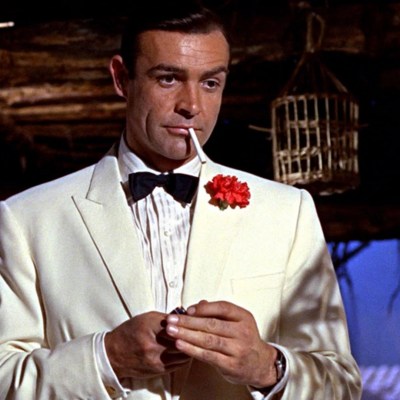“He moved like a panther.” This was the observation which convinced producers Albert R “Cubby” Broccoli and Harry Saltzman to cast Sean Connery, a relatively unknown young actor from Edinburgh, in the lead role of the first James Bond picture, 1962’s Dr No. It was this decision which was to forever change the face of movie stardom and blockbuster film-making. The choice was not, initially, a popular one with 007 author Ian Fleming; where his books had imagined Bond as the archetypal upper-class English gentleman, the gruff Scottish Connery brought a transatlantic insouciance and a palpably working-class edge to the role. In the process, he had invented the modern action hero.
Within a few short years, Connery had been cemented as an international sex symbol and propelled to unprecedented heights of celebrity. He later said of the relentless pursuit by fans and the press, “the only comparison would be The Beatles, but there were four of them to kick it around.” Perhaps it was because of this relentless adoration that Connery’s focus quickly shifted from blockbusters to meatier roles in smaller productions.
Thus it was in September 1964, off the back of the smash-hit Goldfinger and approaching the peak of his 007 fame, that Connery travelled to the blistering heat of Almería to shoot The Hill with up-and-coming American drama director Sidney Lumet. A mid-budget, black-and-white British war drama, this was entirely divorced from the technicolour spectacle of the Bond adventures, and it’s unlikely the film would have been made at all without Connery’s name attached. His commitment to the project is perhaps illustrated by the fact that the filming schedule caused him to miss the red carpet premiere of Goldfinger in London. This faith turned out to be well placed, as The Hill represents some of Connery’s finest work in front of the camera – a powerfully nuanced performance which effectively immunised him from typecasting by the Bond films.
Set in a British Army disciplinary camp during the Second World War’s North African Campaign, The Hill stars Connery as Trooper Joe Roberts, a disgraced new inmate whose rebellious spirit brings him into conflict with the brutal prison authorities. From its opening moments the film knowingly trades on Connery’s celebrity and imposing screen presence. The cavernous wrinkles and beads of perspiration on his twitching, moustachioed face are framed in extreme closeup – a stark visual technique Lumet was fond of using to add cinematic impetus to the script.
Indeed, there’s a remarkable lack of vanity throughout Connery’s performance. Forgoing the hair piece on which he relied as Bond, his receding hairline is on prominent display, and the screenplay provides little opportunity for his characteristic swagger. The anti-heroic Trooper Roberts is stripped of Connery’s usual physicality and sex appeal, allowing him to stretch his legs as an actor into moments of moral complexity and weakness.
Read more
A crucial such episode arrives in the final act of the film when Roberts, bloodied and exhausted after days of abuse, collapses during a verbal confrontation. Unlike the suave and controlled professionals with whom Connery was usually identified, Roberts is a broken man always teetering on the edge of losing control. Taken within the context of his superstar career status at the time, it’s a brave and remarkably vulnerable performance.
Although Connery receives top billing, his name arriving before even the film’s title in the opening credits, Ray Rigby’s screenplay for The Hill is really an ensemble piece. Connery’s brilliance is more than matched by a malevolent performance from Harry Andrews, who makes for a formidable antagonist in the form of the tyrannical RSM Wilson. There’s also an intense turn from Ossie Davis as Private Jacko King, a West Indian prisoner who endures racial abuse from camp guards and fellow prisoners alike, and eventually allies with Roberts in his campaign against the cruel authorities.
Depicting the British military establishment as ignorant, callous, and vicious, the film avoids the typically optimistic and patriotic trappings of British war films of its era, and this may explain its relative underperformance at the box office. Awarded an ominous “X” rating by British censors upon release, it paints a grim and uncompromising picture of the masculine barbarity which flourishes at times of war, and the moral courage required in facing up to it.
Rarely feted with the same veneration as Connery’s Bond blockbusters of the sixties, The Hill remains an underseen British classic which nevertheless illustrated the Scottish superstar’s immense range as an actor, and placed him in good stead for when the time came to retire 007’s licence to kill. He made four more films with Lumet, notably including the dark 1973 crime drama, The Offence, but none would match the dramatic intensity or political radicalism of The Hill.
As the first and arguably finest Bond, Sean Connery reinvented what it meant to be a leading man. In a real sense, he was James Bond, but The Hill demonstrates that he was also so much more; an actor of versatility and vulnerability with a dedication to his art that went beyond what was easy or in vogue. The ultimate icon of his era, Connery was to British screen acting what the Beatles were for British rock, and every male film star of the last six decades lives in his shadow. He might have moved like a panther, but it was his humanity which dominated the screen.

